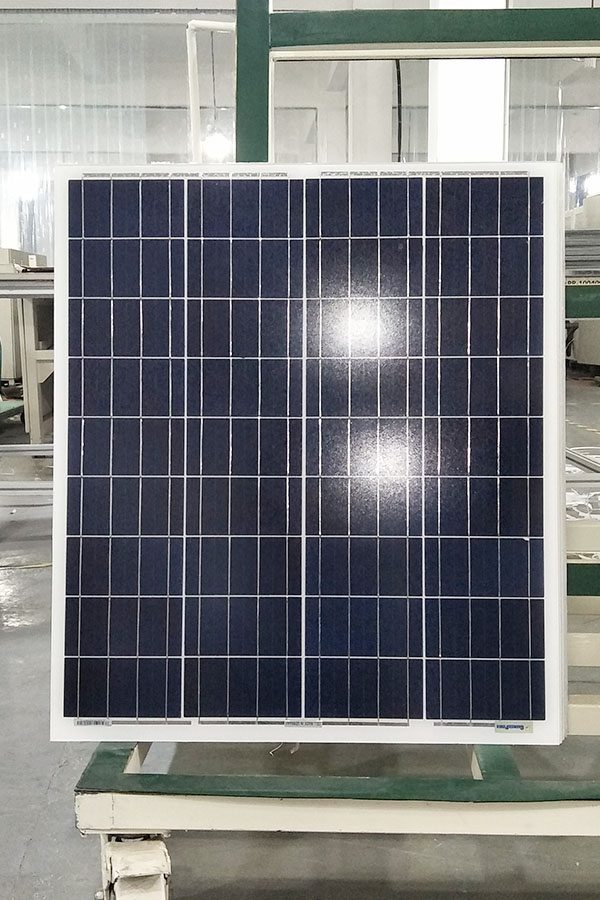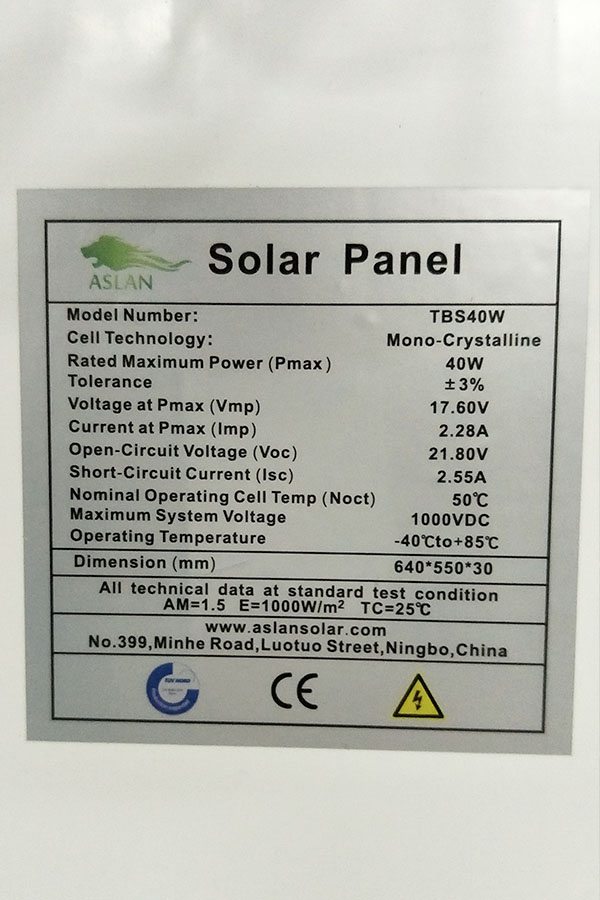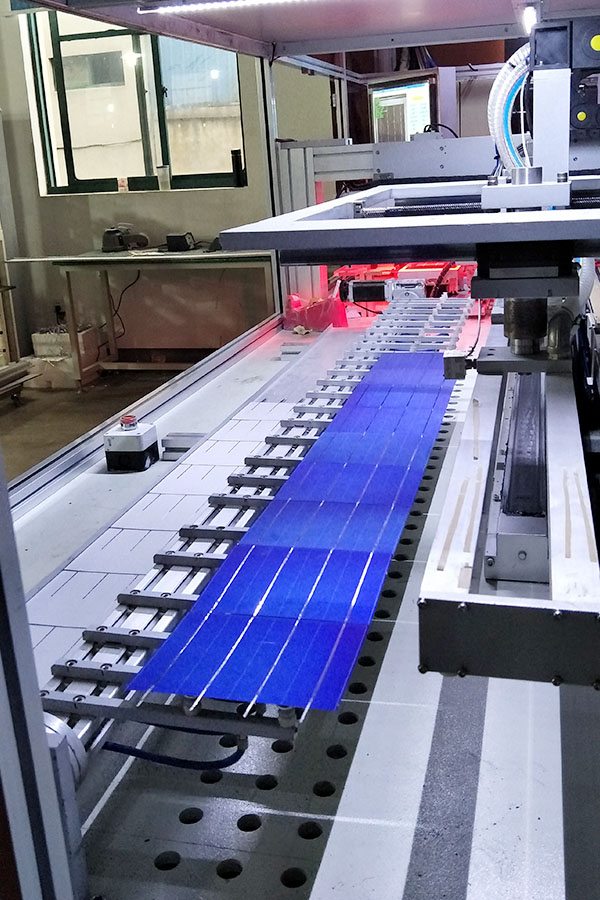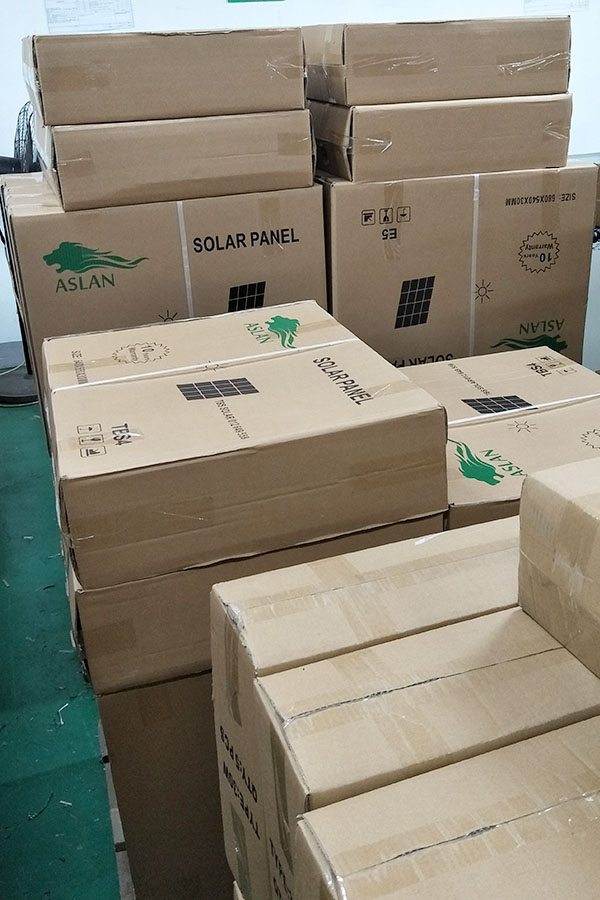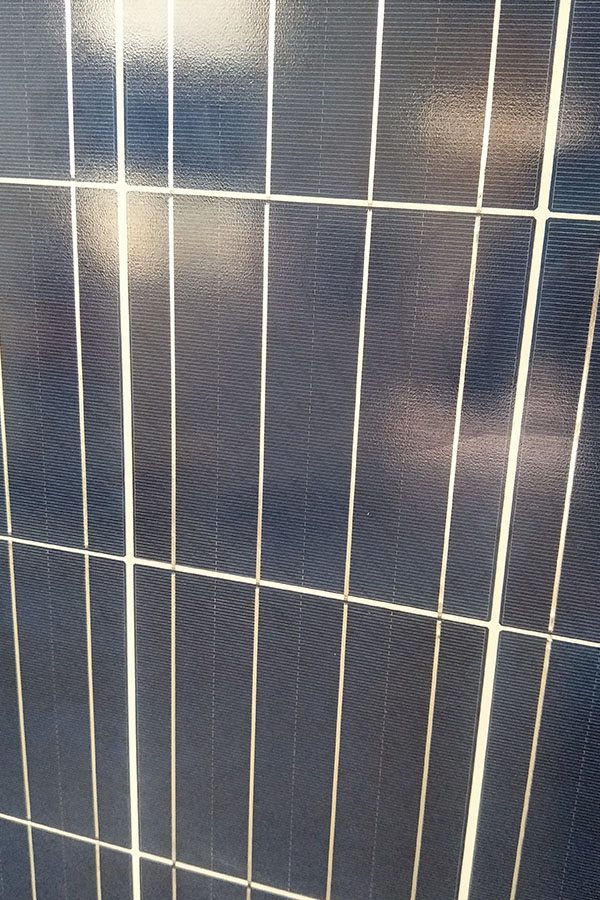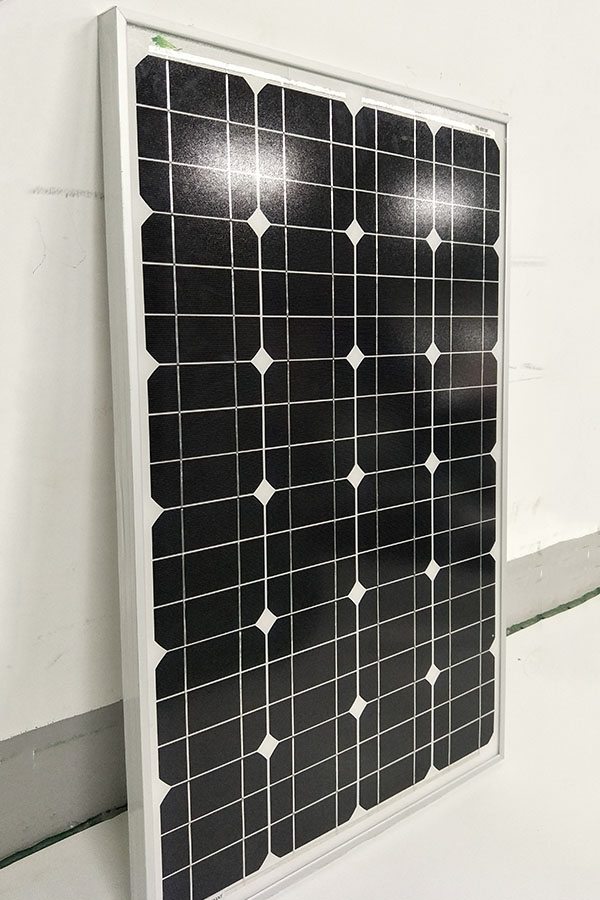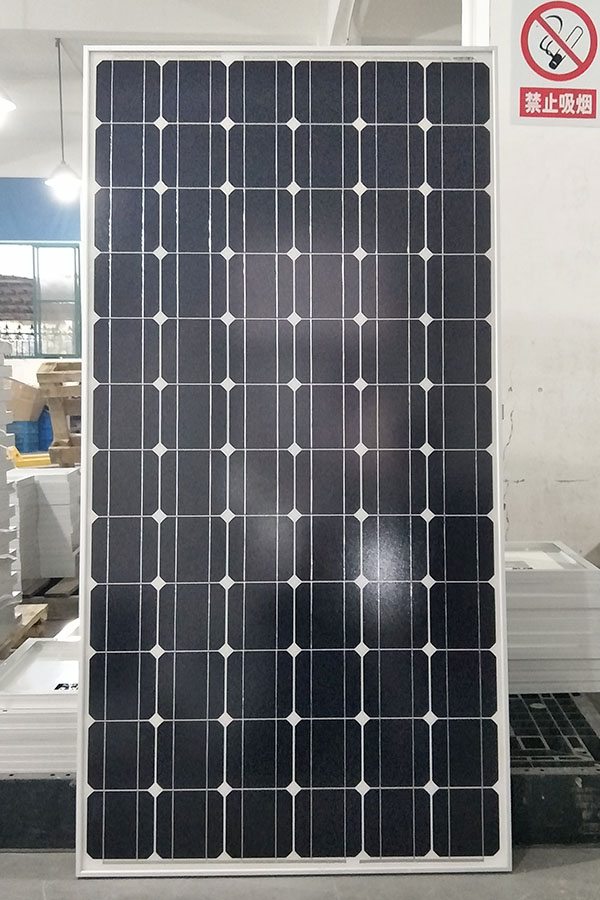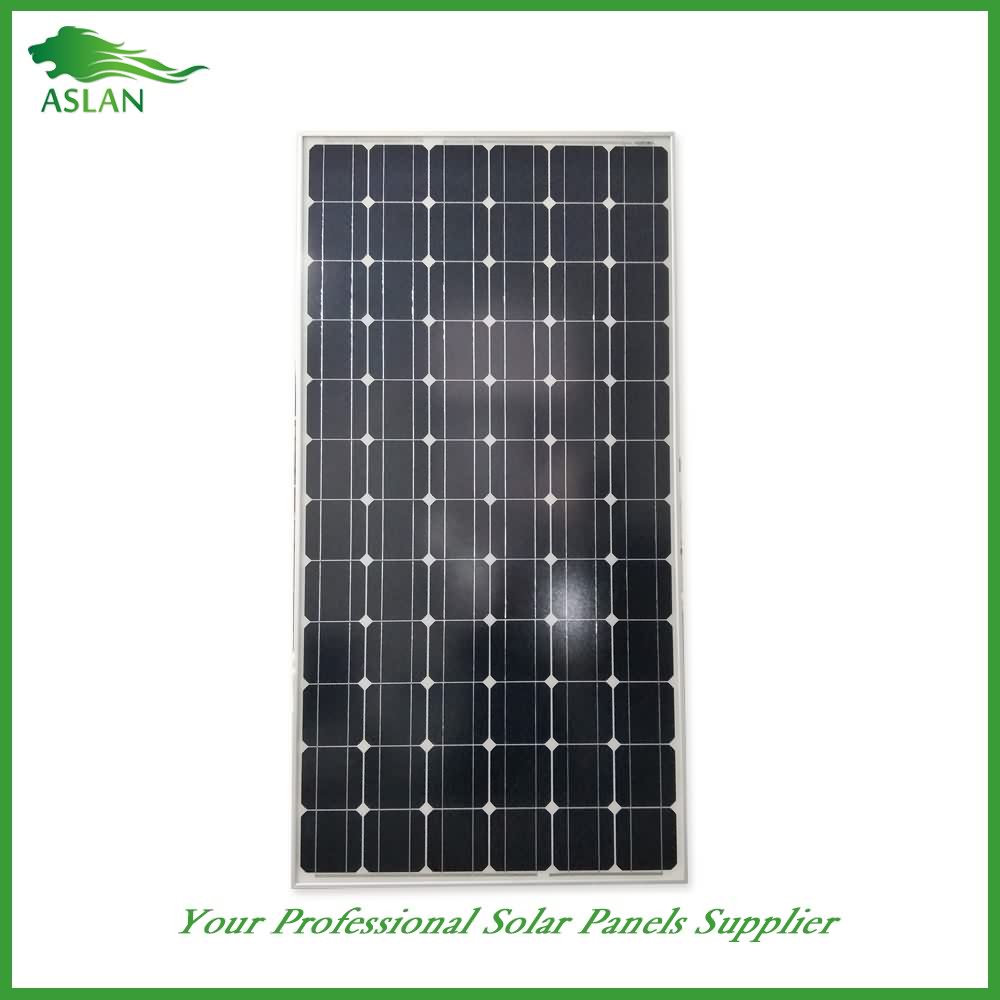Cheap price Poly-crystalline Solar Panel 60W Factory for Ottawa
Short Description:
we can offer high quality products, competitive price and best customer service. Our destination is "You come here with difficulty and we give you a smile to take away" for Cheap price Poly-crystalline Solar Panel 60W Factory for Ottawa, We, with open arms, invite all interested buyers to visit our website or contact us directly for further information.
Poly-crystalline Solar Panel 60W
Technical parameter
Maximum Power(W) 60W
Optimum Power Voltage(Vmp) 17.35V
Optimum Operating Current(Imp) 3.46A
Open Circuit Voltage(Voc) 21.16V
Short Circuit Current(Isc) 3.80A
Mechanical Characteristics
Cell Type Poly-crystalline 156 x 65mm
No of Cell 36 (4x9pcs)
Dimensions 678x657x35mm
Weight 5.0Kg
Front Glass 3.5mm,High Transmission, Low Iron,Tempered Glass
Junction box IP65 Rated
Output Cable TUV 1×4.0mm2/UL12AWG,Length:900mm
Temperature and Coefficients
Operating Temperature(°C): -40°C ~ + 85°C
Maximum System Voltage: 600V(UL)/1000V(IEC) DC
Maximum Rated Current Series: 15A
Temperature Coefficients of Pmax: -0.47%
Temperature Coefficients of Voc: -0.389%
Temperature Coefficients of Isc: 0.057%
Nominal Operationg Cell Temperature (NOCT): 47+/-2°C
Materials of solar panel
1).Solar Cell——Poly-crystalline solar cell 156*65mm
2).Front Glass——-3.2mm, high transmission, low iron, tempered glass
3).EVA——-excellent anti-aging EVA
4).TPT——-TPT hot seal made of flame resistance
5).Frame——anodized aluminum profile
6).Junction Box——-IP65 rated, high quality, with diode protection
Superiority: high quality anodized aluminum frame, high efficiency long life, easy installation, strong wind resistance, strong hail resistance.
Features
1. High cell efficiency with quality silicon materials for long term output stability
2. Strictly quality control ensure the stability and reliability, totally 23 QC procedures
3. High transmittance low iron tempered glass with enhanced stiffness and impact resistance
4. Both Poly-crystalline and Mono-crystalline
5. Excellent performance in harsh weather
6. Outstanding electrical performance under high temperature and low irradiance
Quality assurance testing
Thermal cycling test
Thermal shock test
Thermal/Freezing and high humidity cycling test
Electrical isolation test
Hail impact test
Mechanical, wind and twist loading test
Salt mist test
Light and water-exposure test
Moist carbon dioxide/sulphur dioxide
For Any Kind Of Help Contect Me On:
http://mrengineerpk.blogspot.com/
Facebook PAge:
https://web.facebook.com/MrEngineerpk/
Twitter:
https://twitter.com/Chaloay62
Instagram:
https://www.instagram.com/azeemmahmood62/?hl=en
Google Plus:
https://plus.google.com/u/1/115364231825793174477
Please read the following notes, and especially the section about safety.
This is the simplest type of “ball/sphere and socket” method to fix/aim mirrors of a solar array. They can either be set as either fixed with glue, or variable with other means such as velcro straps, etc. This ball and socket method does not involve “ganged – mechanically connected / in unison” methods for aiming the mirrors; which then require motors. Motors increases the cost and complexity.
Besides for a single mirror as shown in the video, this is also good for an enhanced solar energy system if you use multples (an “array”) of this and combine the total energy from each mirror at the receiver, or even several receivers/different targets, it depends on your needs. Just fix them all (partial sphere with a flat mirror fixed/glued to a flat side of that sphere) so that they reflect the sunlight at the same thing, then that will get hot because there will be more solar (Sun) energy in one position. Use glue, perhpas silicone, to keep the mirror and partial sphere from falling out of the support structure or loosing its set alignment.
Using just silicone on a flat board to fix mirrors is ok, but as the mirrors grow in size (say over 1.5 inches on each side), this becomes a clumsy and unsafe method. The mirrors should not be too big either for this type of mount, perhaps up to 8 inches on a side only.
You can purchase spheres; perhaps wooden or plastic balls (like ping-pong balls, or styrofoam “craft” balls), but I guess you also can make them out of baked clay shells or hard plaster type materials. I guess it is possible to make 2 half (50%) spheres from one complete sphere.
The support structure should be made to be moveable, maby on some wheels, or just lifted onto some wooden turntable or blocks, so that the reflection from the Sun can be set to desired position. Another idea is a “stand” where you can perhaps tilt the support structure and tighten with some handknob screws. Height can also be adjusted if made to do so.
In the diagram in the video I mentioned that the sphere must be greater than 50% (less than 100% is obviously understood since there needs to be a flat area on the sphere to fix/glue the mirror to). I rethought this over and it can be less than 50% as long as the sphere segment does not “fall through” the diameter of the support hole.
Try this out, I’d like to see some creations and cool methods of application. A practical method is with solar cooking, so try mirrors that are about 3 to 4 inches square on a side. Near the focus of this system, you can also use a director mirror to reflectfully aim the beam, say up to the bottom of a pot, pan, solar oven (baking) with a metal bottom (an internal heat radiator would be wonderful here, or bake a solar thin crust pizza nice and crisp), or other cooking surface (such as a pancake/waffle griddle).
SAFETY:
When working with lots of sunlight, be sure to wear safety glasses/goggles, a welding helmet or some properly tinted window/sheild to protect your eyes.
For safety for the cook, for example, I reccomend heating a “flat plate” of which the cooking container/surface will then be placed upon. This will prevent, for example, a pan being lifted away and the intense sunlight shining on anyone doing that. Looking at the sun is bad enough, so don’t try to even think about looking at more than that as with these high energy solar energy systems. Keep people and pets from going between the mirrors and the receiver to prevent injury, so it helps to keep the distance between these two parts of the system as short as possible.
YOUR IMPROVEMENTS NEEDED:
Right now with this system I’m not interested with any “solar tracking methods” as with standard heliostats, but am more interested in low cost user friendly/do-it-yourself type of constructions. One thing that is needed for a future enhancement is a cheap and easy method to set each sphere (when not glueing them into fixed positioin) into position by hand; perhaps some type of screws, rubberbands, etc so that enough pressure can hold the sphere into position in possible high wind conditions. For example a shell segment of similar diameter to the partial sphere can be made to press against the ball with some pressure and an optional arrangement for this is to set the partial sphere into position from the “back side” of the support structure. I’m thinking velcro type fasteners is a simple solution. There is good room for participatorial improvements to this system.
Perhaps using the Sun to set up a fixed focus system is not such a great idea since it will be “moving” and you will be moving the mirror system. A good way to set up each mirror might be to hang a light at approximately the same altitude as the sun and use that. Setting up the system can still be done though using the Sun. Perhaps covering previously aimed mirrors is a good idea.
